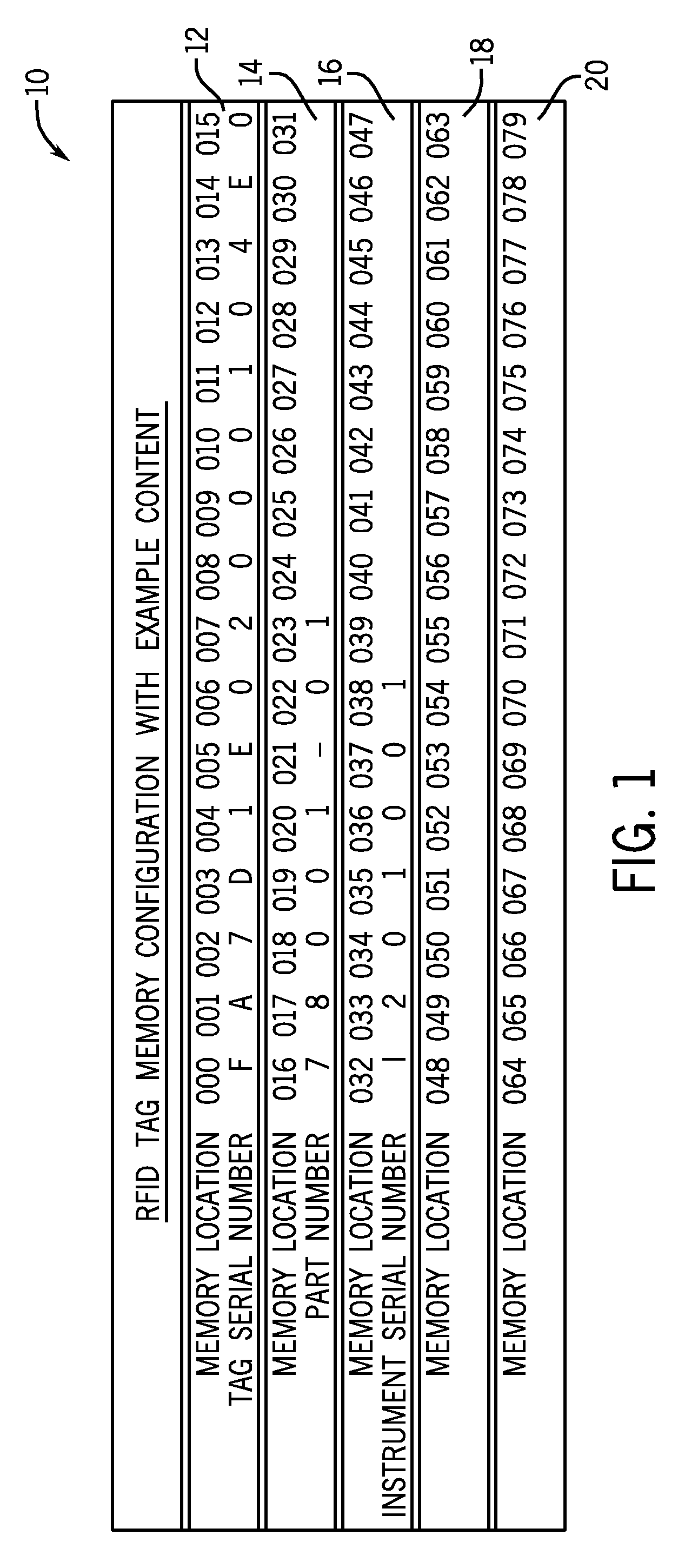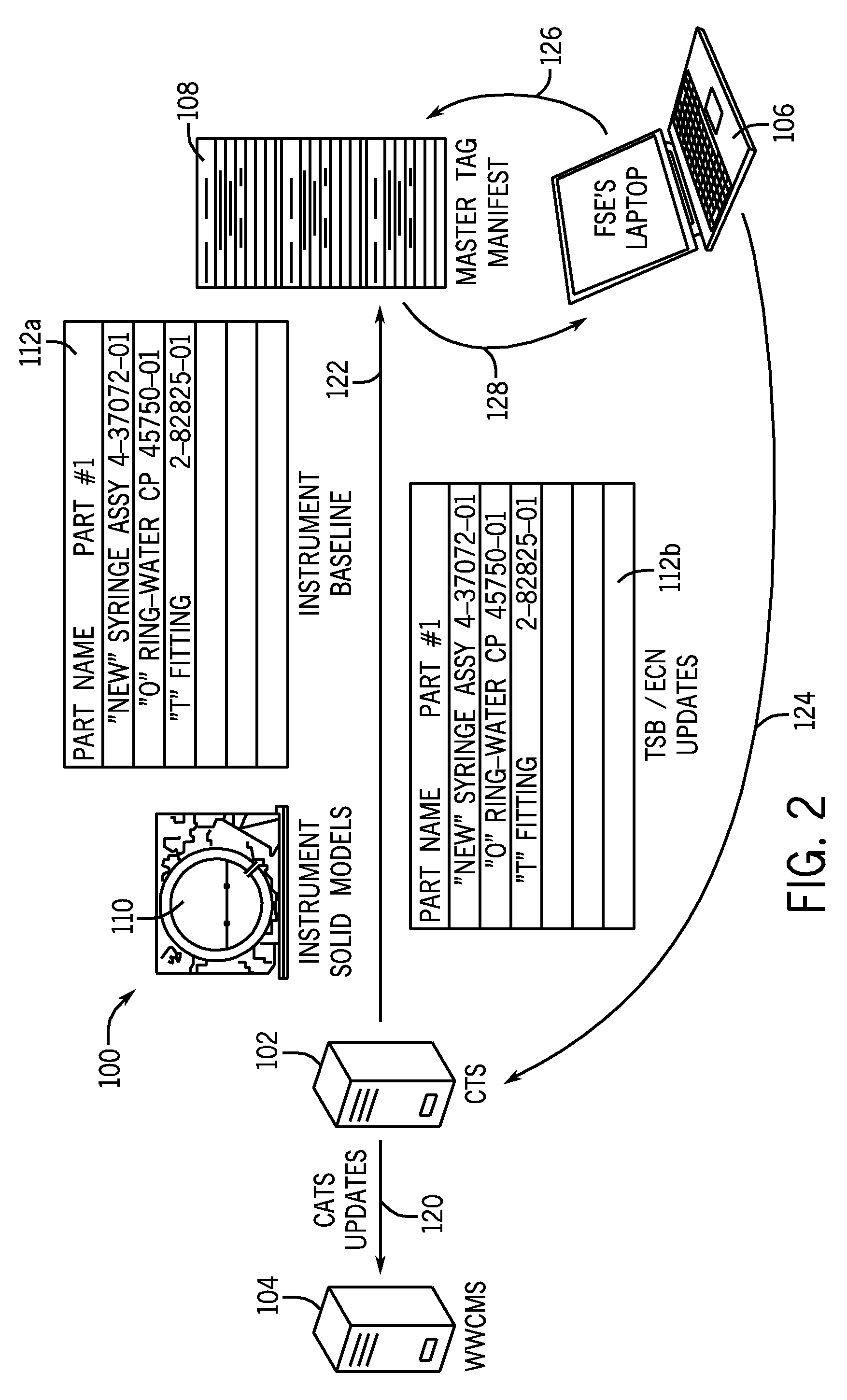System for tracking the location of components, assemblies, and subassemblies in an automated diagnostic analyzer
a technology of automated diagnostic analyzer and tracking system, which is applied in the field of tracking system, can solve the problems of high cost, increased power consumption, and high cost of radio frequency identification tags that utilize ultra-high frequency radio waves
- Summary
- Abstract
- Description
- Claims
- Application Information
AI Technical Summary
Benefits of technology
Problems solved by technology
Method used
Image
Examples
example
[0093]The following equipment was used to demonstrate the operation of the configuration management system described herein:
[0094]Medical Instrument:
[0095]ARCHITECT® i2000 immunoassay analyzer was used. (De-energized, i.e., not plugged into an electrical outlet and having its cover in place)
[0096]Reader:
[0097]Escort Memory Systems LRP7400 Reader / Writer (13.56 MHz) was used.
[0098]Radio Frequency Identification Tags:
[0099]ExypnoTech 13.56 MHz radio frequency identification tags were used. The radio frequency identification tags were in compliance with ISO15693, Philips I-code protocol. The radio frequency identification tags were Class 1 radio frequency identification tags
[0100]Master Radio Frequency Identification Tag:
[0101]EMS (Escort Memory Systems) radio frequency identification tag was used. The master radio frequency identification tag was not used in this example.
[0102]Shielding:
[0103]ECCOSORB® material BSR-1 / SS-6M of 0.010 inch thickness was used when the radio frequency ident...
PUM
 Login to View More
Login to View More Abstract
Description
Claims
Application Information
 Login to View More
Login to View More - R&D
- Intellectual Property
- Life Sciences
- Materials
- Tech Scout
- Unparalleled Data Quality
- Higher Quality Content
- 60% Fewer Hallucinations
Browse by: Latest US Patents, China's latest patents, Technical Efficacy Thesaurus, Application Domain, Technology Topic, Popular Technical Reports.
© 2025 PatSnap. All rights reserved.Legal|Privacy policy|Modern Slavery Act Transparency Statement|Sitemap|About US| Contact US: help@patsnap.com



